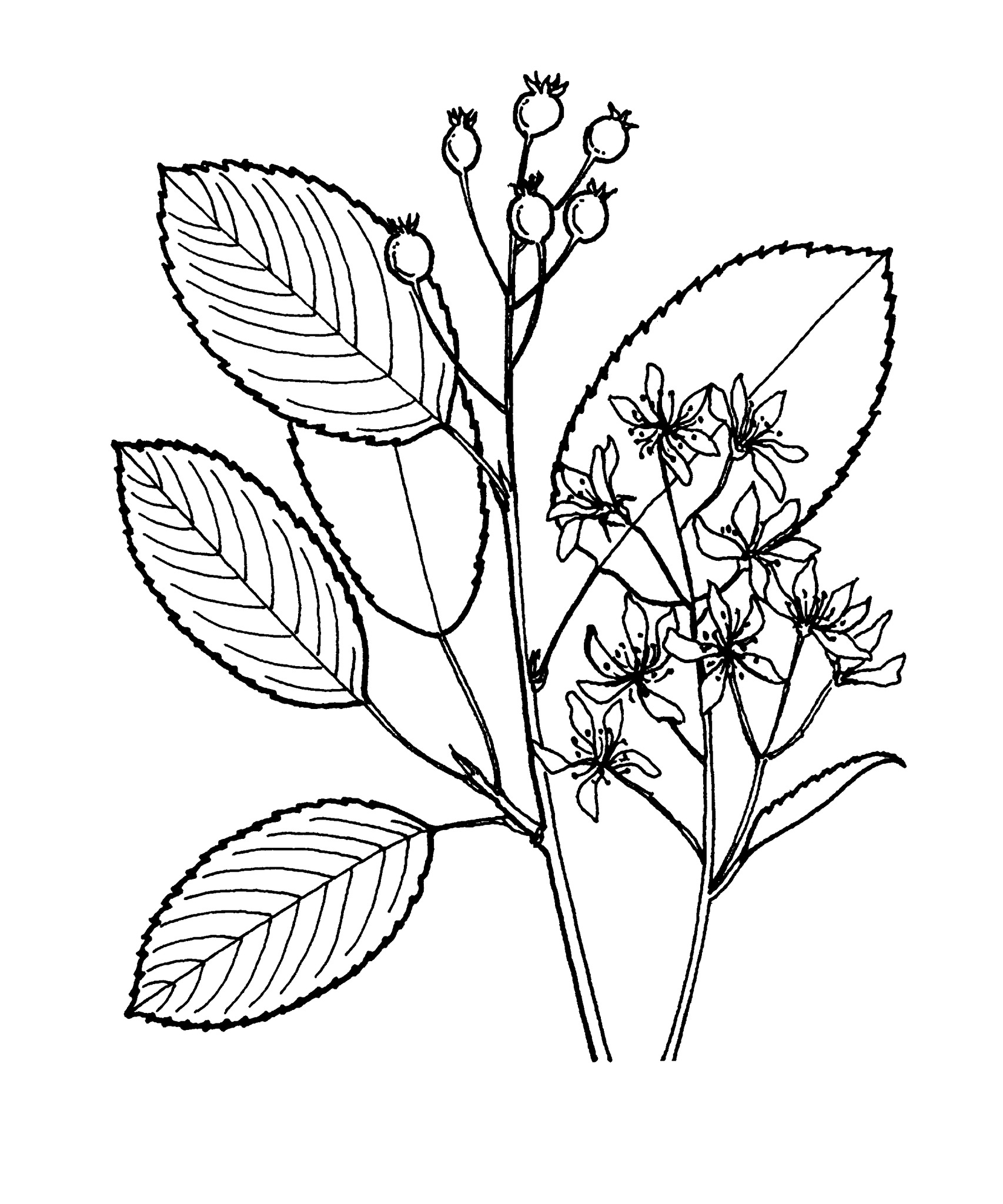
From the French Amélanchier, Provençal name for A. ovalis.
Deciduous shrubs and small trees. Leaves alternate, entire or saw-toothed; stipules soon shed. Flowers in terminal racemes, mostly white, appearing before or with the leaves, rarely solitary. Sepals 5, with a bell-shaped tube, persistent. Petals 5. Stamens 10-20. Ovary inferior; styles 2-5. Fruit a purple to black pome (generally edible) of 1-5 incompletely divided chambers, each with 4-10 seeds.
Grown for the appealing habit, attractive early flower clusters, and ornamental fruit.
About 25 species from northern temperate regions, mostly Asia, N America and Europe.
Seed or suckers, occasionally by budding.
The mature fruits of many N American species are eaten and in Europe are used in stews or for preserves.
Flowers in racemes; ovary inferior; stamens 10-20.
Source: (2002). Rosaceae. In: . Horticultural Flora of South-eastern Australia. Volume 3. Flowering plants. Dicotyledons. Part 2. The identification of garden and cultivated plants. University of New South Wales Press.
